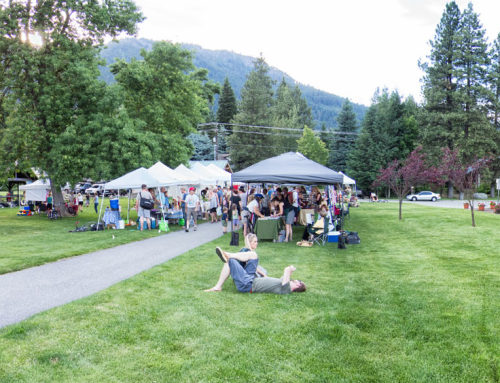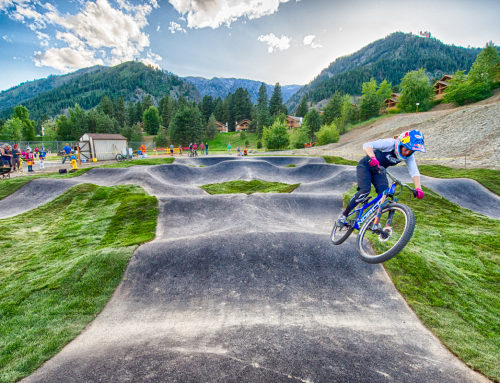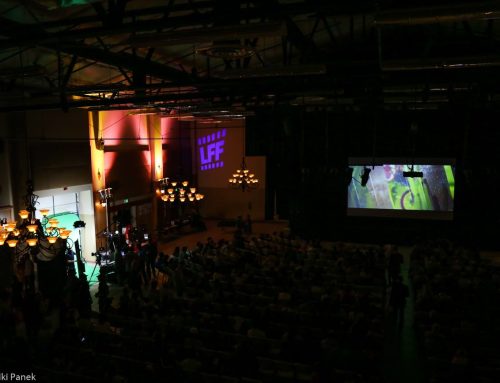Thanks to Marlene Farrell for contributing the following piece.Icicle TV is interested in your story. Drop us a line sometime, Thanks Marlene!
Dancing, for the Hearts and Minds of Children
 Winter is upon us. Already, the cold and the dark have begun their reign over our mornings and afternoons, and we’re holing up. Parents of small children see their living rooms converted to playgrounds, and even their own bodies used as additional jungle gym equipment. Whenever possible, the tikes are bundled and shoved outside to run ruts in the snow and restore some adult sanity. It’s a long four months, and kids unknowingly crave and need more movement and exercise.
Winter is upon us. Already, the cold and the dark have begun their reign over our mornings and afternoons, and we’re holing up. Parents of small children see their living rooms converted to playgrounds, and even their own bodies used as additional jungle gym equipment. Whenever possible, the tikes are bundled and shoved outside to run ruts in the snow and restore some adult sanity. It’s a long four months, and kids unknowingly crave and need more movement and exercise.
Luckily, there is an opportunity for young children ages zero to six to move and learn at the same time. It is the vision of Leavenworth resident, Ellen Gass. Ellen has combined her love of teaching, her passion for dance and her knowledge of movement and brain development to create and offer creative dance classes for children. This winter she will be offering classes in the new studio attached to her home.
Ellen teaches movements, guides children to master those movements and allows them to artistically express themselves. She explains, “The emphasis is on exploring the concepts of dance in order to develop the art of self expression. The focus is on the process, not the product. The child is more the creator than the performer.” The students learn movement concepts such as low/high, light/strong, or curved/straight. They are given an image like a bursting bubble, a wiggling worm, a melting candle. They create a picture in their mind and then act out the picture through dance. The students interpret the concepts in unique ways.
Children can express their feelings through dance that they cannot verbalize. How they are feeling at the moment is reflected in how they interpret a dance concept. But the reverse also applies in that a movement pattern, like floating like a feather, may inspire certain feelings. In both ways the students become more attuned to their inner self.
Two of Ellen’s classes are aimed at babies with a parent or guardian and toddlers. The movement concepts are simplified, there is more repetition, and the parents work with the youngest children, through guidance or modeling of a concept. In these first few years, a child’s brain is rapidly changing, building synaptic pathways as she encounters new experiences. Teaching children of all ages, Ellen works “with developmental movement patterns which engage the brain in positive ways.” In a dance class that stimulates an infant’s senses and brings him the pleasure of moving and playing with peers and parents, there is a lot of positive feedback.
For older children, initial movement patterns are demonstrated or described. The students have to use critical thinking skills to determine how they will move. They try new movements, explore, adapt and learn from each other. They also get cues from the volume, speed and pitch of the music. The children are both active and reflective at the same time. Such exercises can even focus the attention of an overactive child that might otherwise be unsafe or disruptive.
 Creative dance can also aid a child that avoids or craves touch sensations. If the child is reluctant to join an activity, the safe environment and observing the movements repeated by others may coax the child to engage and accept increasing levels of tactile sensation. This could improve the child’s future willingness and comfort with receiving touch from self, family or friends. In contrast, if a child craves excessive touch or vestibular movements, then a creative dance class can provide a safe space to move and learn appropriate movement and touch boundaries as established and repeated in class.
Creative dance can also aid a child that avoids or craves touch sensations. If the child is reluctant to join an activity, the safe environment and observing the movements repeated by others may coax the child to engage and accept increasing levels of tactile sensation. This could improve the child’s future willingness and comfort with receiving touch from self, family or friends. In contrast, if a child craves excessive touch or vestibular movements, then a creative dance class can provide a safe space to move and learn appropriate movement and touch boundaries as established and repeated in class.
Creative dance varies from technique and choreography based classes but there is structure within the continuous stream of activities. In a single class a child might dance with a scarf, hop between rubber spots, spin in a giant bucket, somersault across a mat, play a tambourine, leap to a live musician’s beat or crawl through a tunnel. Children will use a paintbrush and imagine the space around themselves as a giant canvas. They will use chopsticks to stretch and grab at something just out of reach. They will form shapes, pulling a stretchy band in unique ways with various body parts, or working with others to make a larger, more elaborate shape.
Undoubtedly, the children whisk away the hour, not thinking about their brains. They are not considering their increased body awareness, balance and coordination. They don’t care that they are cooperating with the other students and learning to respect individual differences. Only the parents will observe the self-esteem written in their wide smiles. They are too busy skipping and twirling with joy in a miniature galaxy, set in motion by their creator, Ellen.
And students want to come back for more. One child, after taking a couple classes, has asked her mom repeatedly, “When can we take dance class together again, Mom?”
The specifics: Ellen Gass will be teaching 16-week dance classes beginning in January. The four classes are for:
- Two months – prewalking with a parent/guardian
- Walking to 2 ½ years
- 3 to 4 ½ years
- 4 to 6 years
She is also offering a once a month intergenerational dance class for ages 7-adult and an open gym play hour. For more information on times and availability, please contact Ellen at gassellen@yahoo.com or 885-8115.




